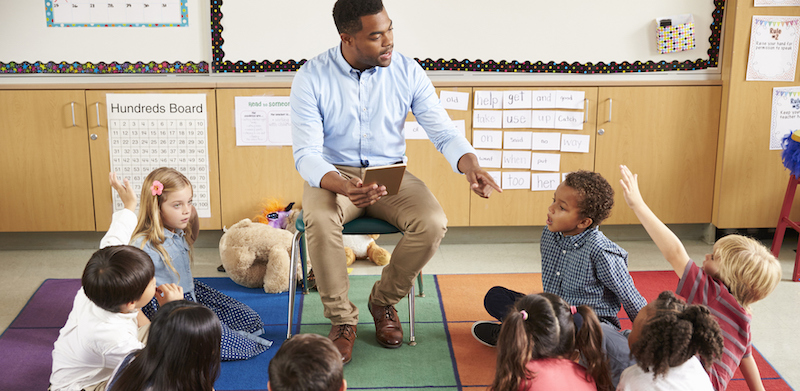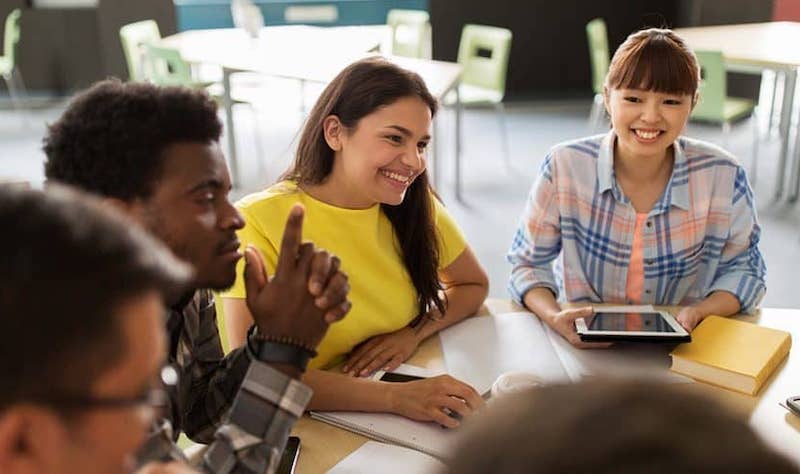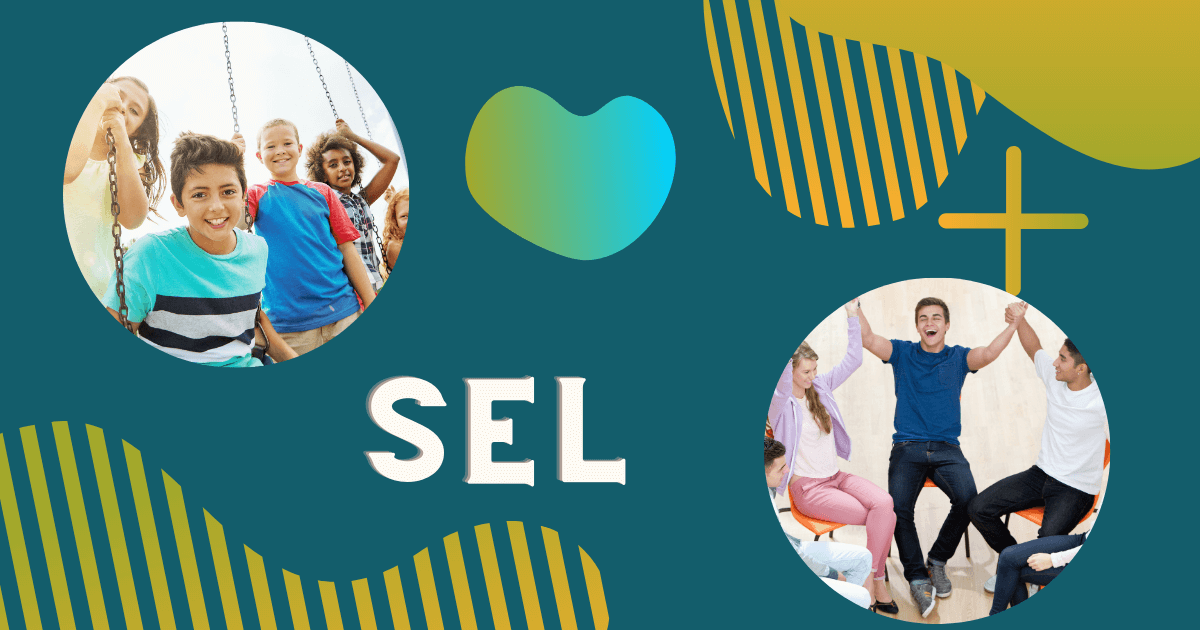We constantly highlight different kinds of STEM learning but, honestly, that’s not the only element of 21st century education. In addition to the key STEM skills students are going to need, they’re going to need to develop strong SEL and soft skills, like communication, collaboration, listening, and more. There's also a social-emotional aspect of teaching children today, however. Social and emotional learning is a process through which kids gain and apply new knowledge, attitudes, and skills to better understand and manage their emotions and relationships. By integrating these practices in instruction, teachers help them learn to set and establish goals, show empathy for others, and create positive relationships.
The SEL Framework
The number of instructors making a conscious effort to incorporate social-emotional learning in instruction is certainly rising. Over the last few years, despite plenty of resistance, education leaders have developed an SEL framework that teachers use to connect with kids and their families. This allows educators, parents, and community members to jointly promote academic development alongside the social-emotional growth. Of course, teachers have to cover curricular requirements but opportunities for social-emotional learning are easy to integrate into everyday instruction. Plus, even outside the academic classroom, whether in the halls or on the playground, teachers can put those same points of emphasis into practice and show kids what it means to be positive members of the school community.
Why prioritize social-emotional learning?
When educators focus on the social-emotional side of learning, it could impact students in multiple ways. This includes the likelihood that SEL practices guide their curricular choices teachers make, meaning that kids might have more opportunities for collaboration or even going out into the community to contribute to a meaningful project. Of course, each of these two examples constitute great ways for not only embedding SEL opportunities into education but also helping kids develop 21st century skills in the process. SEL also tends to affect school policies and can drive how students relate with each other, which can create a more inclusive environment in terms of both social and academic opportunities. Plus, it can help school leaders engage with students, with the entire community, and with the growing need for developing future-ready graduates with strong soft skills.
Understanding the impacts of SEL.
Like any innovative educational initiative, there's no agreed-upon, definitive, best way to introduce SEL but even informal experiences can help. In a lot of districts, educators have tools designed for social-emotional instruction and they're evolving in terms of breadth. Ultimately, social-emotional learning can help students grow into valuable members of society. At a young age, teachers can help them by aligning their resources with the demands of today’s world, monitor the progress they make in pairing SEL with their curricula, and design informal assessments to understand where their students are both socially and emotionally. With so much focus on anti-bullying initiatives in this day and age, taking some time to teach social-emotional skills could very well go a long way in curbing this epidemic. Plus, it can help them to build empathy and learn to look at challenging situations from all points of view.
Developing SEL Skills Using Robotics Tools
In today’s classrooms, many educators focus on teaching STEM skills to prepare students for the future of work. The good thing about providing students with STEM learning opportunities is that it allows educators to include many different 21st century ideas. At or near the top of this list is the opportunity to weave social and emotional learning into STEAM instruction. A popular way of bringing STEM and SEL together is using educational robotics tools. These tools tend to create invaluable collaborative learning experiences while helping students develop problem-solving skills at the same time. While we don’t ever know exactly what the future workforce will hold, we do know that technology will be big. In addition to tech skills, students will also need social and emotional skills but, ultimately, they’ll need to pair them.
Why classroom robots help in these situations.
The more experience children get with robotics, coding, and computers, the better prepared they will be. Robotics learning helps them see things develop right before their eyes and this immediate feedback also generates authentic satisfaction. Robotics even helps students learn to recognize patterns, work together, communicate effectively (with the technology and with their peers), and build problem-solving skills. While these experiences help them develop a foundation of computational thinking, they are also related to their social-emotional development. It's common for students to experience significant social-emotional growth through the use of robotics in their classroom. This can start to materialize very early on in a child’s life—as soon as kindergarten or first grade. But, using robotics collaboratively helps them realize the importance of simple concepts, like sharing and teamwork, ultimately preparing them to take the next step.
Building SEL skills and other key competencies.
Like in all areas of student development, forming good social-emotional skills requires a strong foundation. Luckily, robotics involves a lot of problem solving, trial and error, and failure. But, experiencing adversity in learning is a perfect way for kids to bolster their resilience, which is one central social-emotional trait. They should try to overcome hiccups on their own rather than relying on others. Oftentimes, struggling to find a solution leads them to work with their peers, which—you guessed it—really helps them in developing their communication skills at the same time they’re working on key problem-solving skills. In an ideal world, this troubleshooting and communication will lead to favorable results for kids. Then, they could truly recognize their SEL development by reflecting on past experiences and struggles they overcame.

Getting Social and Emotional with Virtual Reality
Often, when people experience VR for the first time—especially kids—it fosters various emotions. Most of those reactions center on excitement, awe, and enthusiasm and so much of quality learning today involves getting kids enthusiastic about the material. So, when teachers can use an intriguing resource, like VR, kids might channel that excitement in a positive way. Using VR, educators can engage students with a medium that’s both super new and appealing to their senses and interests. Learning with VR prompts experiences that promote deeper self-learning and self-knowledge, social awareness, and other SEL skills. Take social awareness, for example. Maybe elementary students haven't traveled to many places in their lives. Maybe they only know the area they live in. VR can give them a taste of living by the beach, in a city, or in a dense village, helping them channel new emotions and empathy.
How VR boosts SEL development.
In today’s classrooms, teachers strive to redefine real-world readiness while navigating not knowing exactly what to focus on. As we mentioned, two of the most certain parts of students’ futures might be technology and personal relationships. The social-emotional side of learning is important, too, as it helps children gain some deeper self-knowledge, boosts their individual awareness, and can spark and develop added social awareness. Digital technologies, including virtual reality, are playing a more prominent role in helping kids develop these traits, providing many advantages that drive a shift that will help them in the future. It’s now becoming more and more accepted that social-emotional skills will play a bigger role in children’s futures and teachers are now beginning to see that tools like VR can help them build a foundation for success.
A new medium in social-emotional learning.
Virtual reality tools provide teachers with a lot of support when creating educational experiences that are enhanced by immersion. VR even helps provide kids with previously missing context and helps boost their social awareness. Specifically, this immersion enables a deeper understanding and amplified connection to material and concepts for students. It can also simulate real-world context and consequences in a very real way. In terms of context, VR can help students develop a deeper understanding of any subject—academic or not. Plus, the self-awareness students often gain when using VR can influence how they view their own purpose and sense of agency. In looking at the world objectively and empathetically both now and in the future, students can transform their VR learning experiences into a springboard for their development.
Improving SEL Experiences with Coding
STEM skills, SEL skills, coding skills... These are all important for the futures of today’s students. Finding a spot to bring social-emotional learning into coding education is a great way for teachers to optimize their lessons. In a world in which memorization is basically a thing of the past, coding and SEL are common in school. Determining knowledge with tests is great for checking understanding while kids are still in school but this can leave them unprepared for the real world, especially with building relationships and working in teams. When teachers have to teach for the test, students might develop less relevant skills or miss out on social-emotional development. The hands-on and collaborative nature of coding in education, however, is one way teachers can get students to work together while working on their SEL development.
The benefits of coding in K-12 education.
Coding experiences in the classroom are awesome because they provide an enjoyable and beneficial mix of challenges and engagement. Not all the skills children learn from coding are exclusively technical, either. Coding also helps them to strengthen their problem-solving and critical-thinking skills as they engage with the content they are creating. It even unlocks play-based learning opportunities, which naturally makes it a lot more enjoyable for kids. Especially for younger students in the K-3 grades, coding also often aligns with socialization and play. Coding tools, like the Cubetto, for example, are like toys that they can control with inputs that affect outputs. At this age, kids learn best in play-based environments when they are engaged and being creative. They're also able to learn from their failures, which is a hallmark of their development.
SEL, STEM, and a sense of belonging.
With coding and so much reliance on computer science also come stereotypes—mainly some notions that females aren't as prominent in STEM careers as males. Girls can begin believing this at an early age and it can discourage them from pursuing STEM in any way. So, engaging them in coding before they form these biases is key. Not only could it affect their futures in a positive way, coding could also help them feel more confident and increase their social-emotional strength. Finally, the interactive nature of coding and the fun projects embody a positive atmosphere. Like coding, it's best for kids to learn SEL skills earlier in life and within a collaborative environment. Coding encourages collaboration and communication, which are two crucial SEL and real-world skills. As kids become capable (which might happen earlier than you’d think), getting them involved with coding can speed up their STEM and SEL development.

Bringing SEL and PBL Together
Project-based learning helps students to get active in their learning and active in their communities. By working with both their classmates and members from within their communities, students can put various creative and SEL skills to work. It's pretty common for local communities to be facing any number of small issues that affect day-to-day life for citizens. Maybe a new park keeps getting vandalized. Maybe the traffic lights at a busy intersection keep going out. Whatever the issue is, it's an opportunity for students to work with officials or citizens to devise a solution. This is great practice for real-world problem solving and also helps kids develop SEL skills, like collaboration, empathy, and communication—another example of how we can bring authentic learning to life using SEL.
Capitalizing on intrinsic SEL elements in PBL.
In project-based learning, educators present students with genuine problems and challenge them to find solutions using research and inquiry. This leads to students collaborating with each other to create a clear answer to questions that were posed to them. Project-based learning, however, also aligns with social and emotional learning for many key reasons, including activating student agency, giving them added voice and choice, allowing them to give and receive feedback from various sources. This helps to make learning more meaningful for students and allows them to truly connect with their work. When they're passionate about a project they're creating, they’ve obviously done something to enhance their social and emotional skills. For that reason, PBL is a great method when trying to have students work on growing them.
Increasing engagement and student interest.
When combining SEL and PBL, educators also have chances for differentiation and creating experiences that students are truly passionate about. PBL even boosts student engagement even more on top of the added engagement from their extended interest in this content. This then tends to lead to better academic performance and quicker 21st century skills development. Uniting PBL and SEL also helps children bolster key skills for the rest of their schooling and in future careers. These include flexibility, adaptability, initiative, self-direction, accountability, and responsibility. When they put PBL in practice and work with with peers, they can put their SEL skills into practice, too. And, in utilizing these SEL skills on a social, emotional, and intellectual level, they'll be ready for their next challenges.
For the latest EdTech, STEM, and 21st century education news, follow us on Twitter and Instagram. Like us on Facebook, too, or sign up for our newsletter for our latest product announcements and offerings. If you have an idea for an Eduporium Weekly theme, send us a message on social media or comment below.



